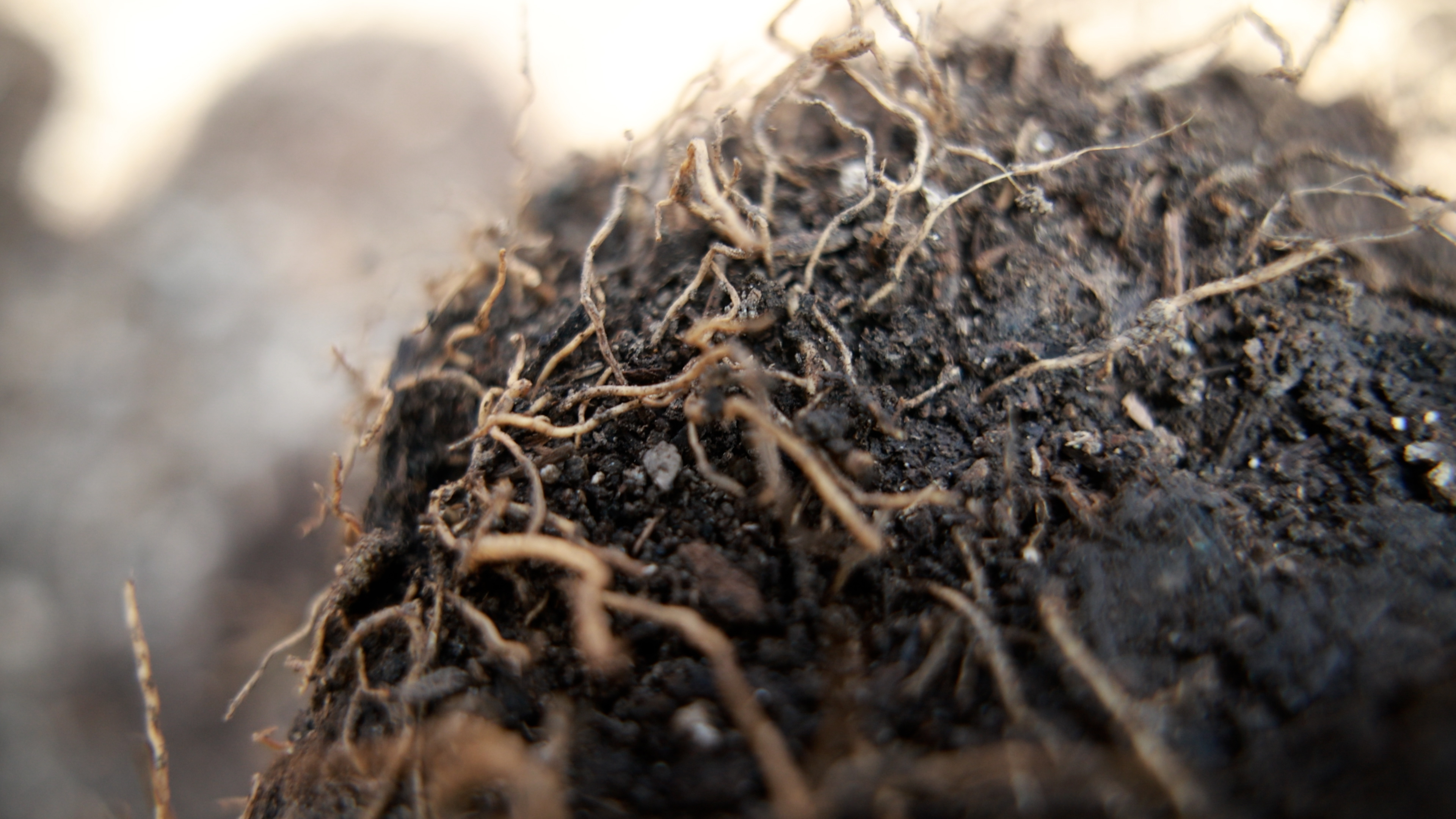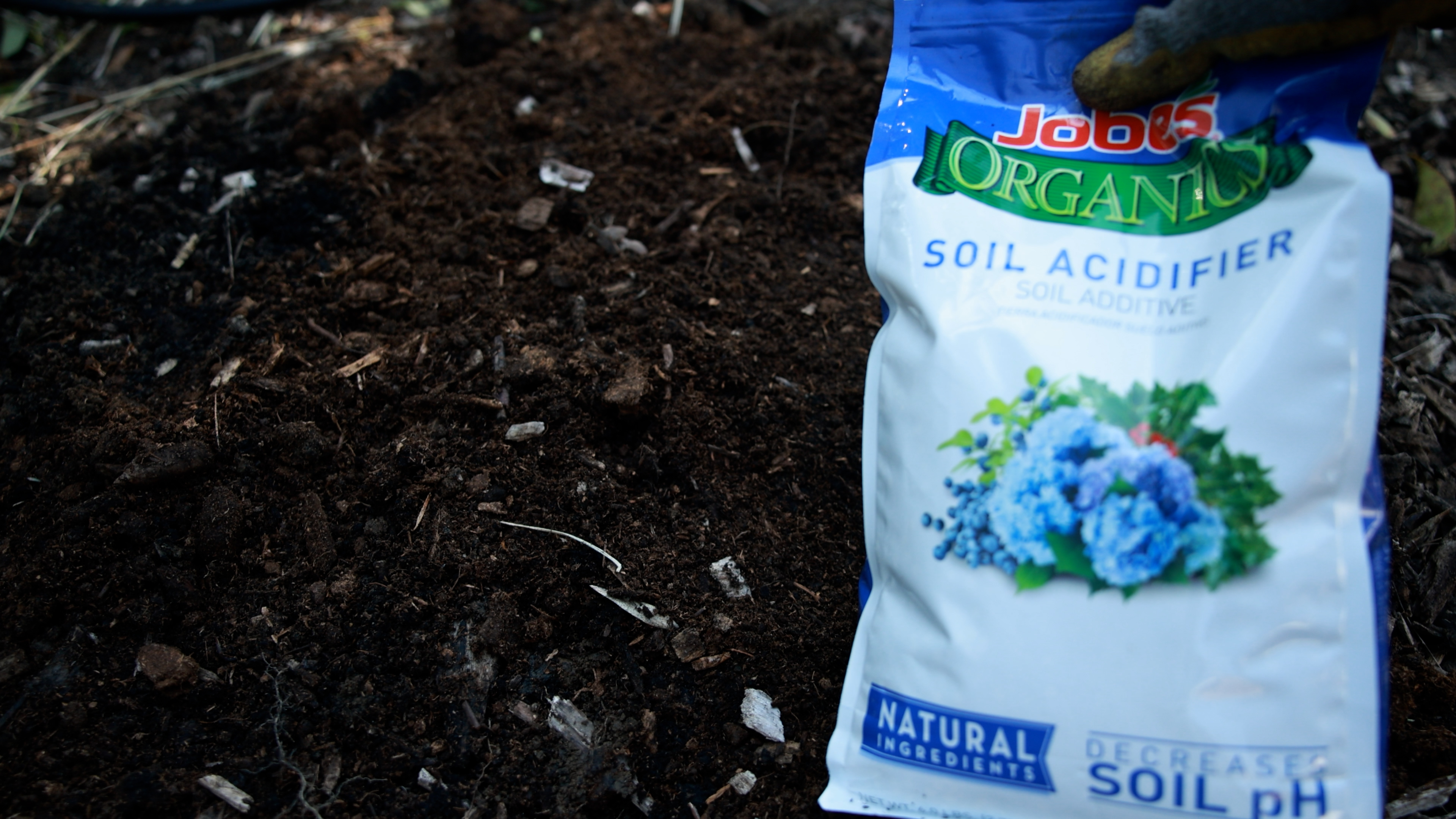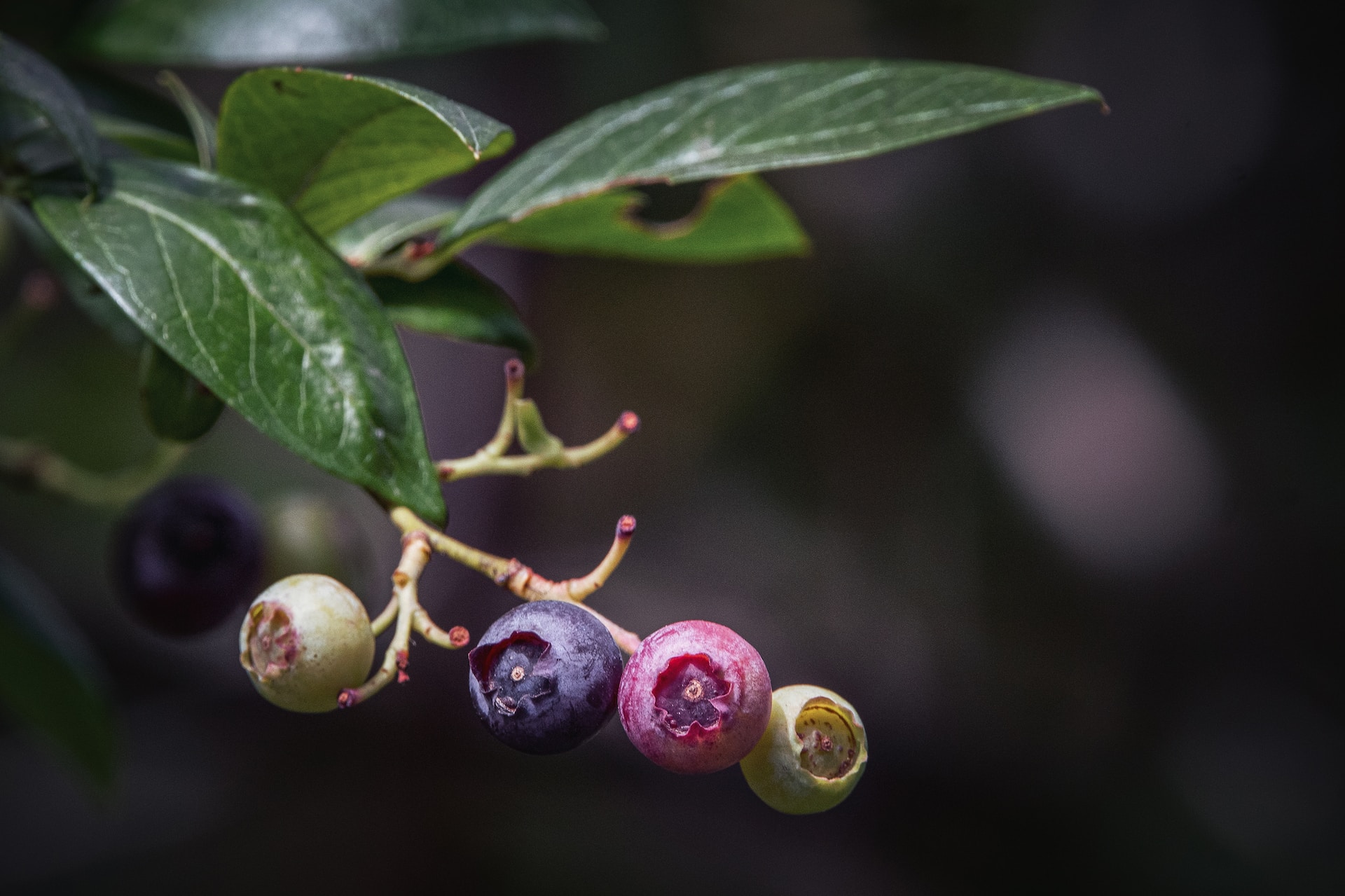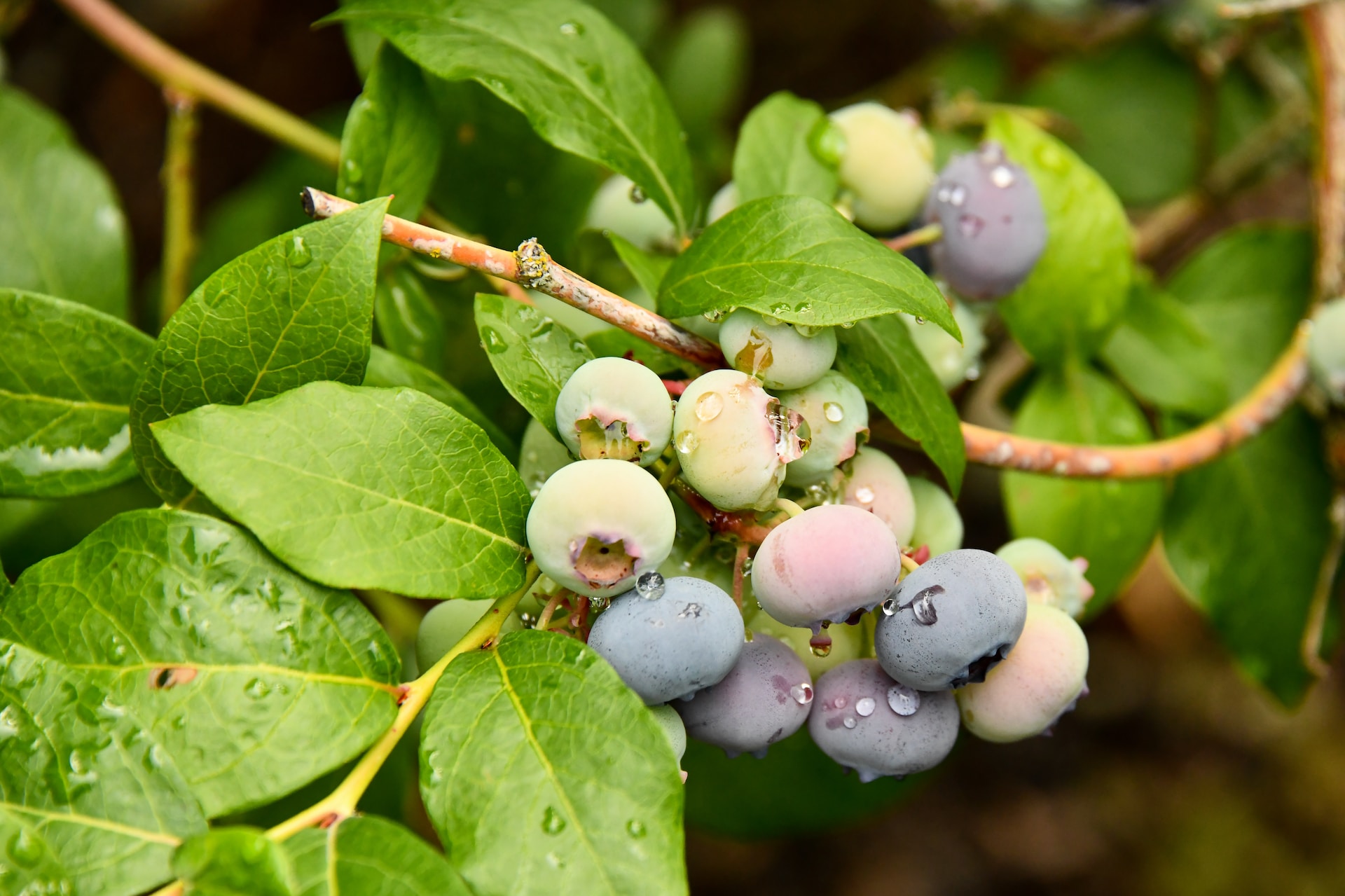Blueberries are one of the most challenging edible plants to grow successfully for us home gardeners. They require a ridiculously acidic soil, they’re prone to both heat and cold damage, and they don’t set fruit very well in isolation. Additionally, their roots are shallow, bad at taking up water, and not very good at penetrating dirt. You know, the things we normally associate with roots!
And a lot of that is simply because wild blueberries (and there are many different species) that were cultivated into modern varieties originally evolved to thrive in places like dense woody thickets, swampy bogs and rocky barrens. Places that are just very dissimilar to most of our gardens.
I’ve been experimenting with growing blueberries for the last two years in a variety of soils and with a variety of amendments and I have to say, the rumors are true, they really don’t like living in dirt that other edible plants would love. This isn’t one of those cases where we’re being tricked into buying expensive amendments we don’t need.
Blueberries deserve the hype. They’re drama queens.
But don’t be afraid! They’re not impossible. Actually far from it. With a little prep and some very affordable materials, you can totally plant your own blueberry patch and harvest plenty of delicious berries. And not just in containers. Nope, I’m going to tell you all you need to know to plant blueberries even in terrible, soggy, dense soil like we have.
Blueberry Soil Requirements

If you’ve done any research on growing blueberries you already know they love acidic soil. Don’t you worry, we’re going to get into that - but there’s a few other things I want you to know first. There’s more to it than just pH levels.
First off, it’s so important to understand that their roots are shallow and fibrous. They look like a mat. So when you prepare your soil, keep in mind that the most important layer to amend is the top 8 inches. Up to 12 inches will be utilized by most blueberries and depending on how soft your ground is you might see penetration down to 18 inches. Their roots are kind of weak and they aren’t good at really penetrating tough soil.
Those fibrous roots also mostly lack root hairs, which is a structure that helps with water uptake. Shallow roots plus few root hairs means blueberry soil needs to stay moist or they’re going to dry right up. Unfortunately, they also really don’t like soggy soil. They don’t do well in saturated mediums. You see the problem here I’m sure. We also need to make sure our soil is well draining. It’s doable, I promise.
Next, like the majority of food crops, blueberries want plenty of organic matter in their soil, but they don’t particularly want soil with high nutrient levels. Blueberries don’t need a ton of nitrogen, especially young plants and especially at the time of planting. In fact, they do better in relatively infertile soil. Too much nitrogen can burn them and too much concentrated fertilizer can cause the salinity level to spike, which you guessed it, they don’t like.
To sum it up, blueberries want moist, soft, well-draining soil with lots of organic material but lowish nutrient levels. But at least they don’t need this amended soil all that super deep. To meet these needs, most of us are going to need to do a bit of shopping for soil ingredients.
Amendments Shopping List:
- Wood chips or bark chunks or bark nuggets (to use both in the soil and as a mulch)
- Sphagnum peat moss, if you’re comfortable using it, to lower the pH, retain water, and keep the soft structure of the soil we build over time. I know some folks prefer to minimize use of it or not use it at all, totally up to you
- Steer manure or any low-nitrogen organic material like well rotted leaves to add organic material without harming their roots
- A dedicated acidification agent. Because, of course, blueberries also want to be acidic. Like 4.8 on the pH scale. Just a weird plant
Which means it’s time to talk about….
Acidifying Amendments for Planting Blueberries

Over the last couple of years, I’ve come to the conclusion that my high pH alkaline clay soil requires a purpose-made acidifying product to truly support blueberries. I’ve tried planting with my native soil here and different combinations of soil ingredients and messing around with DIY acidifying options including coffee and vinegar that we not effective. Most of us really do need to add in something designed to bring those pH levels down.
So let’s take a moment to really understand our options on that front. There are a few types of acidification amendments out there. And there’s a lot of misinformation about what these acidification products can and can not do and how they fundamentally work.
Personally, I would only use an organic product like straight elemental sulfur or a soil acidifier product like this one from Jobes.
And I’d steer clear of aluminum sulfate that can pump too much toxic metal into your soil if used incorrectly. Aluminum sulfate is effective but not worth the risk for me.
With aluminum sulfate off the table, our first organic option would be to buy straight elemental sulfur pellets, which are cheap and effective. If you have a year before you want to plant and you want to stay on budget, they’re a good choice. But I prefer the second option, an organic soil acidifier product because it contains both “free sulfur” which is just elemental sulfur and “combined sulfur” which is really just their labeling term for sulfate. In some products sulfate is contained in gypsum and sometimes it’s going to be sulfate bound with bentonite clay. What you need to know is sulfate is the form of sulfur that is readily available and usable for plants. This means that this stuff is going to be faster acting as a nutrient than elemental sulfur alone.
Elemental sulfur is actually inert and won’t do anything at first. It needs to be oxidized by bacteria in the soil before it helps us out at all. Specifically by the Thiobacillus genus of bacteria. Yep, we need bacteria in the soil to convert elemental sulfur into sulfates before it can help us grow blueberries!
And the fact that we need to rely on a biological process for elemental sulfur to work has a few consequences, including:
- It only works once the soil has warmed up enough for bacteria to be active. Which means there’s no real point applying it in winter unless you live somewhere very warm or when your soil is very dry. We’re talking between 75 and 100 degrees F (24-38C). That’s the range in which Thiobacillus bacteria do their thing.
- The soil needs to be moist and healthy enough to support the bacterial life. Moist is easy but if you have dense clay soil like us, this is too low in oxygen and nutrients to support our bacteria friends.
- Thiobacillus, the main genus of bacteria we’re counting on here, likes…. acidic soil. Which we don’t have yet, obviously.
Have you spotted the problem with elemental sulfur alone? You can’t get the blueberry plants out of their pots if you cannot pre-acidify the soil with elemental sulfur over winter because it’s too cold and elemental sulfur takes at least 6 months to really become available to the plant and to acidify the soil. So it’s a great option if you are a planner… but I like to impulse buy plants.
So why not just use lots of sulfate? Well because adding sulfate to the soil doesn’t actually acidify our soil. It’s just available for the plant to uptake immediately. In fact it tends to progressively move down the soil layers pretty quickly because it has negative charges and therefore doesn’t bind to negatively charged clay soil particles. What does acidify the soil is the process of bacteria converting the elemental sulfur into sulfate. And elemental sulfur does stick around.
Which is why I’m a fan of jobes soil acidifier or a similar Espoma product that has both elemental sulfur with sulfate in conjunction and combining it myself with an acidic soil ingredient like sphagnum peat moss that will immediately reduce the pH of our mix.
Due to something called cation exchange capacity, clay soil like mine requires more of the acidifier product. And sandy soil requires much less. If you want to know lots, lots more about planting in clay soil, I have a video dedicated to just that. But just keep in mind that your soil type partially determines how much to use.
Blueberry Fertilizer and Nutrition Needs
Let’s talk about plant food. At planting time we don’t really need to add additional fertilizer, the manure is enough. Blueberries don’t need it right now, they don’t want it right now.
That’s it, simple compared to that last section right?!
Selecting the Right Blueberry Variety

My favorite part of planting anything new is selecting the varieties.
And blueberries are extra fun because there are not only a lot of varieties, there are four pretty distinct categories: northern highbush, southern highbush, rabbiteye and lowbush. Each of those categories have different characteristics that make them suitable or not suitable for different climates, so look up which is best for where you live. I live in an area with super hot summers and rather mild winters which means I grow exclusively southern highbush varieties.
After you know what type or category to buy, make sure you get at least two varieties. Blueberries are inefficient self pollinators, which means that while most willl produce berries when planted alone, they do much better alongside multiple plants of different varieties. Trust me, don’t plant just one. Not worth it.
If, like me, you are growing a hedge and live somewhere warm, look out for varieties that have a chance of being evergreen in your area.
We have a couple each of biloxi, jubilee, and palmetto.
Selecting the Best Location for Blueberry Plants
Let’s talk about location. Here’s what to look for a in a blueberry patch:
First off, it should be a big patch because you’ll need at least two plants and they get pretty darn big.
Another aspect to consider is irrigation. See if you can find a spot easy to water because they need plenty.
Try to choose a spot that is slightly elevated and doesn’t tend to pool water too badly. Blueberries really prefer a spot with good drainage to keep their roots from becoming totally saturated.
Blueberries really prefer full sun or close to it so give it to them if you can. I can’t give them full sun however and that’s OK if you can’t either. Shade blueberry patches aren’t ideal but they’re better than no blueberry patch. So don’t give up if you can’t give them 10 hours a day because blueberry plants are surprisingly shade tolerant.
Look for a relatively clear space without many stumps and roots. Blueberries are not good competitors. They’ll be much happier if you can give them their very own space.
Blueberry Plant Spacing
When it comes to spacing, blueberries prefer at least two feet spacing for the biggest harvests. Commercial growers will space them out even more than that.
In my garden I did about 16 inches because I optimized for diversity and because I want a nice dense hedge. If you want to maximize your harvest size in the long run, give them more room to breathe. And by breathe, I mean more room for their roots to grow in their own dedicated space.
How to Plant in Blueberries
Spring is the perfect time to plant some blueberries. Which means it’s the time to implement everything we’ve talked about so far!
It may be helpful to check out our planting video for this section if you plan to follow along:
The first thing to do is dig out a giant planting hole for each plant. Put about a third of that removed soil back into a wheelbarrow or bucket.
Add a few generous scoops of wood chips. They’re good for drainage and aeration and the nitrogen loss when they break down isn’t a major concern. Some blueberry container growers make their potting soil with up to 50% bark chunks. And it works.
Add in about an equal amount of sphagnum peat moss as the native soil. Then add another equal part of the steer manure. Mix it all up and scoop the new mix into your planting holes.
Next up, add in your acidifying agent. I add this directly to each planting hole because I want to be a bit more precise with this step.
I’m not able to give an exact amount because your product may be different and again your needs are likely different. So read the instructions and adjust based on your soil type. My strategy here is to dose the soil right before I plant and then again every two months until the end of fall. Luckily, our soil doesn’t really get cold until like November and will be beautifully acidic come winter.
We’re ready to place the plant in so that its root ball is just below the surface and then gently fill in the hole with the rest of the mix.
Whew, with the plants in place it is time to mulch generously. That fibrous mat of a root system needs protection from heat, from cold, from weeds, and from drying out. Mulching is magical on that front. Really works well.
For what it’s worth, our mulch does not need to be pine needles or pine chips, which you might hear. It’s all just going to break down into a neutral pH compost and they do so very slowly unless you are actively adding nitrogen like chicken manure onto them. Don’t fret about the type of mulch too much.
Blueberry Watering
Unless you live somewhere where blueberries grow readily naturally, I recommend that you install an irrigation line. Blueberries don’t handle summer heat unless they get consistent moisture.
Otherwise, go ahead and water your plants in! Don’t they look beautiful?
Blueberry Plant Maintenance and Ongoing Care Tips

- Keep weeds down. Blueberry roots are bad at competing. I feel like I’m repeating myself. If you have the patience, it’s best long term to not let young plants fruit in the first year. If you have a more mature bush, I would go ahead and let it fruit. It’s ok sometimes to enjoy your harvest even if it’s maybe not perfectly optimal.
- If you are letting your plants fruit, you can give them a light feeding when they begin flowering and another light feeding about a month after that.
- Prune off weak and underperforming canes and shoots.
- If you find you want a few more plants, they are very easy to propagate via cuttings. I strongly recommend it.
And that is it! Blueberries take a few years to hit their stride, but what a great long term investment. I really hope this video maybe helped convince you to give them a shot if you were on the fence.
As always, happy gardening!
